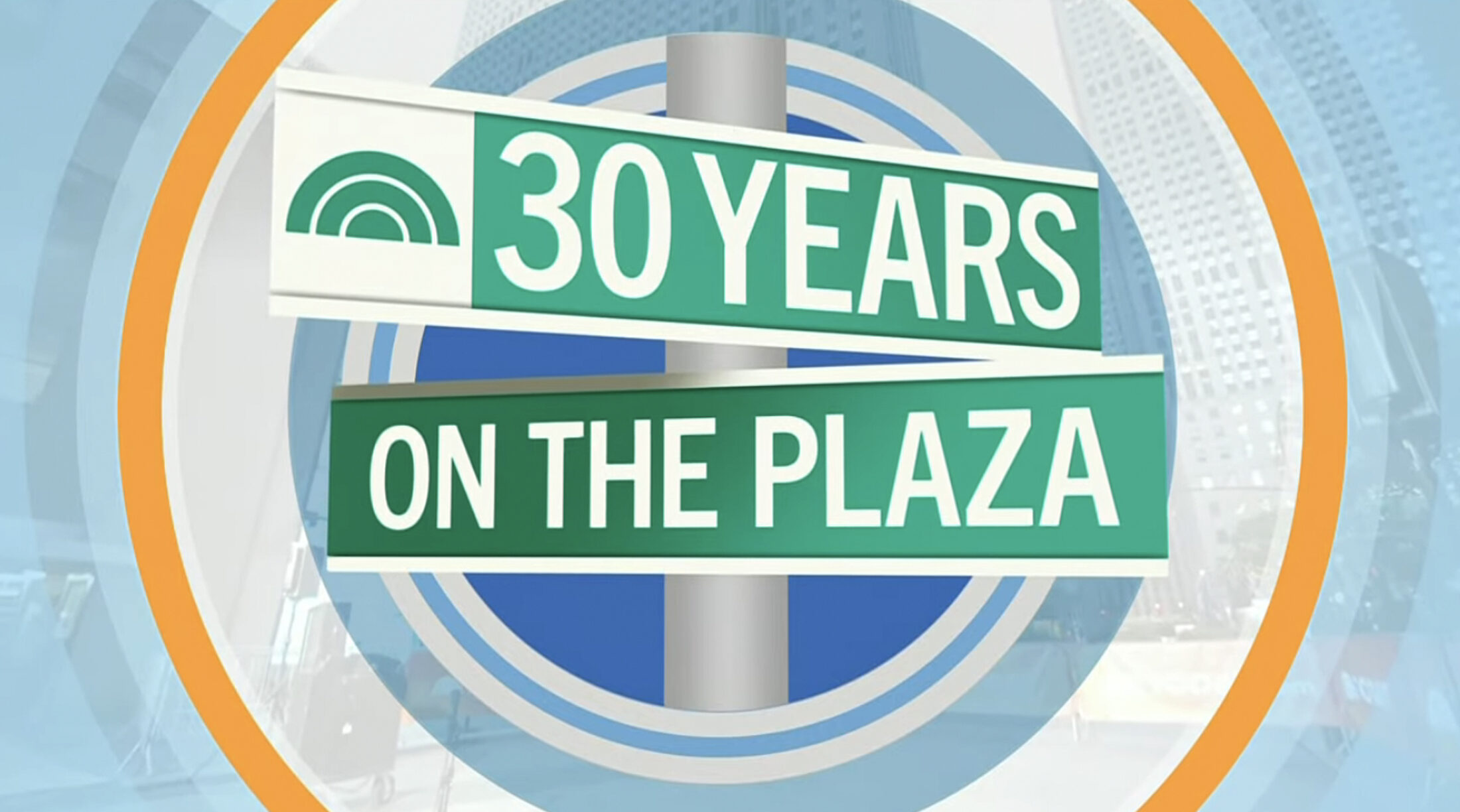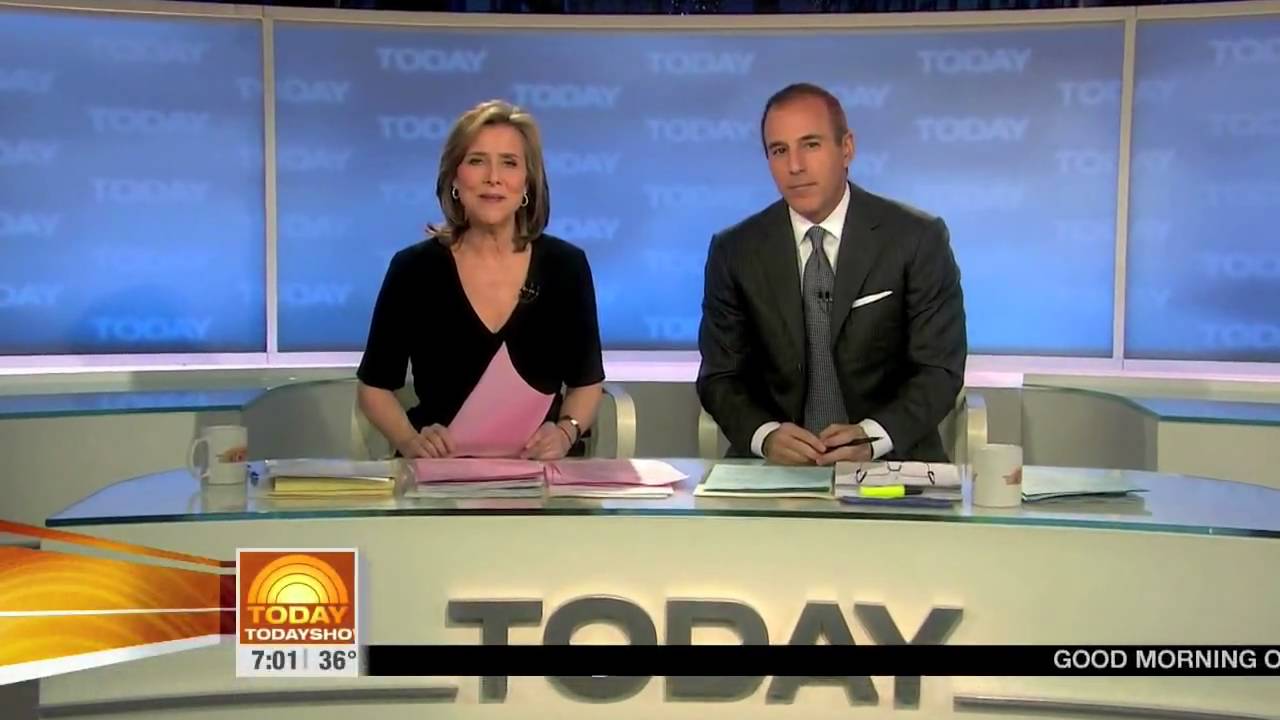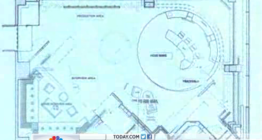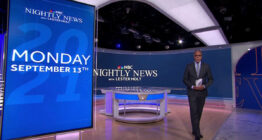Studio 1A turns 30: A look back at the iconic space’s history

Subscribe to NCS for the latest news, project case studies and product announcements in broadcast technology, creative design and engineering delivered to your inbox.
Studio 1A, NBC News‘ iconic streetside studio in Rockefeller Plaza, celebrated its 30th birthday June 5, 2024.
The network marked the occasion with a retrospective as well.
The studio, which is on the northeast corner of 10 Rockefeller Plaza, was unveiled June 5, 1994, by then “Today” co-anchors Bryant Gumbel and Katie Couric.
While Studio 1A in its current form is marking 30 years, the show actually used a streetside studio going back to its debut in 1952, when Dave Garroway was anchor. That version, considered revolutionary at the time at known as the RCA Exhibition Hall, featured an on-set newsroom until 1955.
Located just down the street from the current 1A where Christie’s Auction House is now, the studio was closed in 1958 after a rival TV manufacturer complained that then NBC-owner RCA was emphasizing its own products too much by using the space.
The show moved across the street to Studio 3K until 1962. In July of that year, it moved back to a streetside space that it shared with a Florida tourism storefront.
That stint lasted until 1965, when NBC opted to move “Today” back in to 30 Rock due to the conversion to color television broadcasting and the fact it would need to position color cameras, then pricey, across the street for only one show.
Until moving back across the street, “Today” moved around inside 30 Rock, including Studios 3K, 8G, 8H and 3B.
In 1990, the show started laying the groundwork for how Studio 1A would eventually look when it debuted a new home inside Studio 3B.
That set introduced many of the design motifs that would eventually find their way into 1A, including the mix of medium wood tones, faux green marble, glass blocks and large floor-t0-ceiling simulated windows with duratrans behind them.
After moving, the show firmed up distinct zones of its studio: Home base, the one-on-one area, the news desk, sofa area and production area.
For most of the time in 1A, home based was in the northeast corner of the studio. The one-on-one space was set up camera right of this, eventually to be replaced by the Orange Room and shifted more to the news desk area.
The news desk was typically along the southwest wall of the studio, though it was eliminated in 2006. The sofa space was in the western corner, while the production area was in front of the northern windows along West 49th Street.
Originally, Studio 1A featured an open, atrium-like design with a second floor mezzanine. The idea was that talent could toss to each other between levels, but that never materialized and the opening was eventually covered to create the Satellite Production Area, or “SPA” above the main anchor desk. This area has featured, over the years, a working kitchen space and multiple secondary sets.
It was also the home of MSNBC’s “Countdown with Keith Olbermann” after it moved out of Secaucus and was also used for “NBC Nightly News” during the September 2000 anthrax contamination inside 30 Rock.

In 2003, NBC gave Studio 1A a substantial update from its original look, though many elements such as the wood tones and marble accents were kept.
The main anchor desk area got an updated background to cover the windows when needed and much of the glass block was eliminated in favor of bright duratrans.

In 2006, the show introduced a drastic overhaul, switching to a what many referred to as the “spa” or “sushi bar” set.
Most surfaces were swapped out for a flat off-white and color was largely restricted to color-changing elements fronted with frosted glass. Furnishings were switch to muted tans, beiges of off-whites as well.
In 2015, the show’s studio was renovated into what the network called “America’s Living Room,” an eclectic look that retains some of the monochromatic elements but added in more color.
A significant change in this version was the addition of a rotating turntable under home base and that the show stopped using the windows as the background for the top of the show, instead shooting into the space behind them, showcasing the sofa area and its highly accessorized decor.

The news desk was eliminated (news updates had been done from the main anchor desk for some time before being eliminated entirely over the years) and the one-on-one interview space was moved roughly to its space, in front of a scenic element that jutted into the middle of the space and featured simulated black-framed windows with LED panels behind.
This update also included adding an LED panel behind the sofa that could be raised and lowered and that was designed to sit directly between co-anchors when shot from the desk. NBC also added a six-panel array of vertical LED panels on motorized tracks the could slide left and right as well as a pivot either in tandem or separately from each other.
This new look was decidedly more dramatic and sophisticated, with muted gold and oranges dominating.
During this update, the show also introduced the “Orange Room,” a social media hub designed as a base for Carson Daly, who had joined the show’s cast. This small space, largely carved out of what had been behind-the-scenes areas, featured open workstations and video panels showcasing social media feeds.
The Orange Room was covered after the 2020 election and never returned.
That look didn’t last long, however, with the space updated in the fall of 2015 to be much brighter — a sort of mix between the 2006 and 2015 versions.
In 2018, the network removed the sofa area in favor of a 40-foot, curved video wall installation. The show can still bring in a sofa in front of the video wall, however.
This update also included adding a glass sculptural rendition of the “Today” sunrise logo icon equipped with color-changing technology and also introduced the use of glossy white surfaces.
These first began appearing as vertical wall panels with a dimensional logo. The white material used for this was distinct from the “sushi bar” days in that it was shiny, as opposed to that set’s more matte finish.
This space, along with the six-panel video wall array in the production area, are often used for a variety of segments ranging from musical performances, cooking and food and demos.
For the 2020 election, NBC used Studio 1A to create an election headquarters. Additional scenic elements were brought in, including elements that largely covered the windows in the production area, reportedly due to security concerns.


The primary election anchor area, which included additional anchor desk “wings” to allow for social distancing, was set up in front of the main video wall and a new, straight video wall as brought in to both cover the “Today” logo sculpture and help enclose the anchor area more.
The added scenery upped the use of glossy white surfaces in the space, including in the temporary elements brought in just for the election as well as the video wall surround.
This video wall turned out to be part of a larger update for “Today.” After the election, it was moved in front of the Orange Room space with a glossy white dimensional logo replacing the “Decision 2020” banner used previously.
A little less than a year later, “NBC Nighty News” would move into Studio 1A, giving it the ability to take advantage of the space’s large video walls. Prior to this move, updates were made to add more LED panels and install a peacock feather-inspired screen in front of the windows.
New anchor desks for both “Nightly” and “Today” were also introduced (it’s also worth noting that there have been numerous tweaks and updates in between major renovations that are too numerous to document).
The 2021 updates also included replacing the glossy white column panels with seamless LED elements capped off with the curved element found elsewhere on the set. In some ways, this reduced the role of the white and relegated the material more to just surrounds.
Notably, NBC keeps the “Today” sunrise sculpture in the space for “Nightly,” where it’s typically not shown in full, with video on video shots only showcasing the far ends of the horizontal glass segments. Likewise, the “Today”-inspired arcs camera left of the production area routinely show up on “Nightly,” though because they read more as generic arches, they aren’t necessarily linked to the morning show.
Over Studio 1A’s 30-year history, it has become a high profile icon of NBC News, which has also meant it has become a target for unfortunate events.
In 2013, a man attempted to slash his wrists outside of the studio. During that time, the network kept its windows covered, utilizing the pop-up blue background behind the anchor desk designed for when it is diserable to cover the windows. There have also been cases of flashers and streakers.
In June 2020, amidst growing unrest due to the death of George Floyd and COVID-19 pandemic, NBC erected a protective wall around the studio’s windows as a precaution.
The studio is already well-protected, with high-security glass installed throughout. There is also an inner layer of angled glass, designed to prevent glare and protect the scenery and broadcast equipment from the sun, that surrounds the space.
Security cameras are installed around the area and police or security presence is also not uncommon.
All told, NBC has likely spent millions of dollars on building and maintaining Studio 1A, not to mention the real estate costs, which are likely staggering. It has also had to build out a network of support facilities for the studio, including a complex of control rooms and other technical facilities, offices, dressing rooms and other spaces. There is also significant storage space for scenery and props plus a prep kitchen for food segments.
The “Windows on the World” concept was also duplicated by other broadcasters — including, at one time, all of the “big three” network morning shows as well as cable news, sports and other programs as well as some local stations as well.
Today, Studio 1A still very much serves as a sort of beacon for the network and NBC News.
The northeast corner of the studio features prominent logos on both sides of the building’s cornice (though it has yet to be updated to the new NBC News logo with updated peacock icon and wordmark).
Since installing outward-facing LED surrounds, the studio can serve as a sort of living, digital billboard for the network.
Originally people outside the studio saw a red LED ticker with television monitors showing the live “Today” feed or other video content.
Since their upgrade to seamless LED, however, they can be used for a variety of purposes, ranging from showcasing viewer-contributed photos to doubling a background behind concert performances and other events staged outside the studio. NBC can also feed a simulated news ticker and frames of video content to the panels.
With the space now home to all four hours of “Today” and “Nightly,” which represent a good chunk of the network’s news programming, its role as a physical manifestation of the network is only likely to grow.
Subscribe to NCS for the latest news, project case studies and product announcements in broadcast technology, creative design and engineering delivered to your inbox.









tags
10 Rockefeller Plaza, 30 Rockefeller Plaza, Bryant Gumbel, Carson Daly, countdown with keith olbermann, Dave Garroway, katie couric, NBC News, NBC Nightly News, orange room, rockefeller plaza, Studio 1A Rockefeller Center, studio 3b, studio 3k, studio 8g, studio 8h
categories
Broadcast Industry News, Heroes, Network Morning Shows